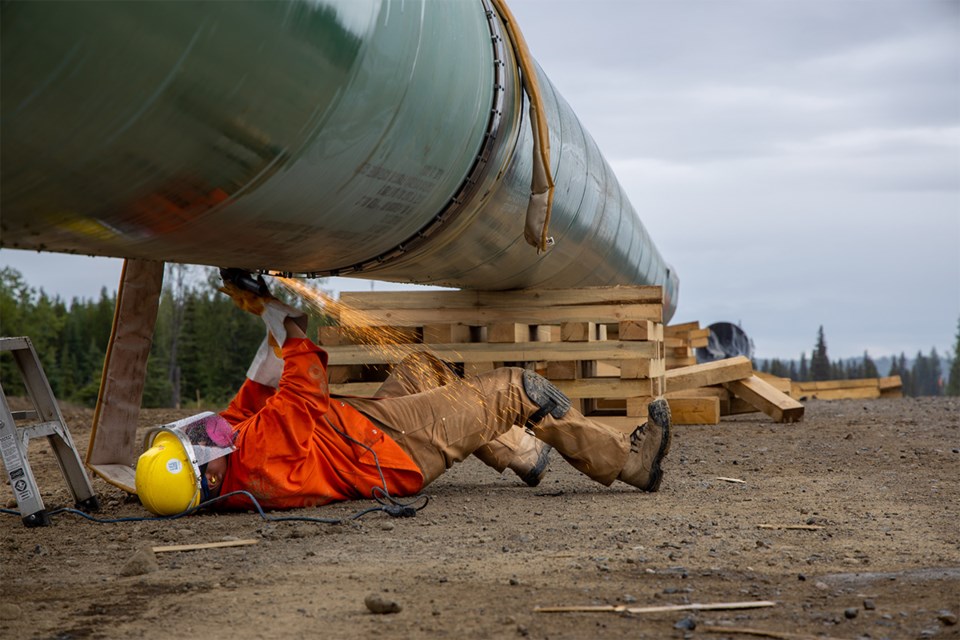Part 2 in an ongoing series
Northern B.C. communities can use the experience and revenue from four megaprojects currently under construction to fuel future economic growth, according to a UNBC expert - but they need a plan to make it happen.
The Coastal GasLink natural gas pipeline from Dawson Creek to Kitimat, LNG Canada liquefied natural gas export terminal in Kitimat, BC Hydro Site C hydroelectric dam near Fort St. John and Trans Mountain Pipeline expansion project from Edmonton to Burnaby are all expected to be substantially complete over the next two years. So what happens when $88.6 billion in projects and 18,632 construction jobs across northern B.C. (based on 2022 monthly averages) come to an end?
“How well communities transition out of the construction phase and move into the operations phase will really depend on how well they planned and took advantage of the construction phase,” UNBC professor and author Greg Halseth said. “You need to put in place the community you want for the coming decades, and you need to do it before the last construction vehicle leaves your community.”
There can be a “staggering difference” in the amount of jobs and economic activity a project generates during the short-term construction phase and during the long-term operations phase that follows once a project is completed, he explained. Halseth is the Canada Research Chair in Rural and Small Town Studies and the founder and co-director of UNBC’s Community Development Institute.
“By no means are all those workers local, or even from British Columbia or Canada. Some are highly-skilled workers from around the world,” he said. “But we do have workers that are local, and businesses that are local. We have skills growth.”
Of the average of 4,954 workers on site building BC Hydro’s Site C dam in 2022, roughly 20 per cent lived in the Peace River Regional District and 48 per cent came from other parts of B.C., including the north, according to BC Hydro labour force reports.
“When we’ve talked with workers, it’s been amazing,” he said. “Their skill set and their employability have been increased.”
In addition to individual skill development, regional businesses have built their capacity and reputation as industrial suppliers, he said.
Halseth said he’s spoken with representatives of a Prince George company that has leveraged its work as an industrial supplier to regional megaprojects to now get contracts with the Port of Vancouver.
“The Haisla (Nation) have been a fantastic role model on how to seize these opportunities,” Halseth added,
BUILDING TOMORROW’S COMMUNITY NOW
Communities that make the transition from construction to operation most successfully, are those which use the revenue and economic activity to build infrastructure to benefit the community moving forward, Halseth said.
That might be public infrastructure like enhancements to roads, new bridges or community facilities which improve the quality of life and desirability of the community, he said.
“While they might have secured some jobs, they need to make sure they get the workers,” he said. “Many of these facilities can be operated in a fly-in, fly-out model. Communities that have the services, quality of life, that people want stand a better chance of attracting those workers – and families – to live in the those communities.”
Private-sector investment, such as new hotels, restaurants and other businesses built to serve temporary worker populations, can form the basis of new industries like tourism, Halseth said. Communities like Fort St. John, Kitimat and Terrace have been successful in attracting new private-sector investment in the hospitality sector, expanding the services available in their communities.
“Parts of construction camps can be repurposed to address some housing needs… or high-amenity RV parks,” he said.
'TRANSITION AND CHANGE IS ALWAYS TOUGH'
Big projects, and the economic booms and busts that come with them, are nothing new to northern B.C., Halseth said. Rio Tinto’s $6 billion modernization project at the company’s Kitimat aluminum smelter, which was completed in 2016, is a recent example.
“The big boom in northern B.C. began in the 1960s,” he said. “We’ve got lots of good examples of ways to do it.”
That boom was driven by the natural resources sectors – mines, pulp mills, lumber mills, oil and gas, etc. – was very successful, for a time. Increased global competition, downward pressure on prices and other factors have accelerated the pace of change, and the need for northern B.C. to diversity its economy.
“We’ve known since the 1980s about the need to transition our economy,” Halseth said. “(And) communities across northern B.C. have worked hard on that transition.”
Valemount is an example of a small forestry community that found a new path forward as a year-round tourism destination, Halseth said, while Prince George has diversified as a service, retail, government and education hub.
Communities that seize the opportunities, and plan for what comes after the megaproject boom is over, may find themselves well positioned for the future.
“Transition and change is always tough,” he said. “(But) properly done, we can come out of it with improvements in our communities… we can come out of it with a business sector that is globally competitive.”





